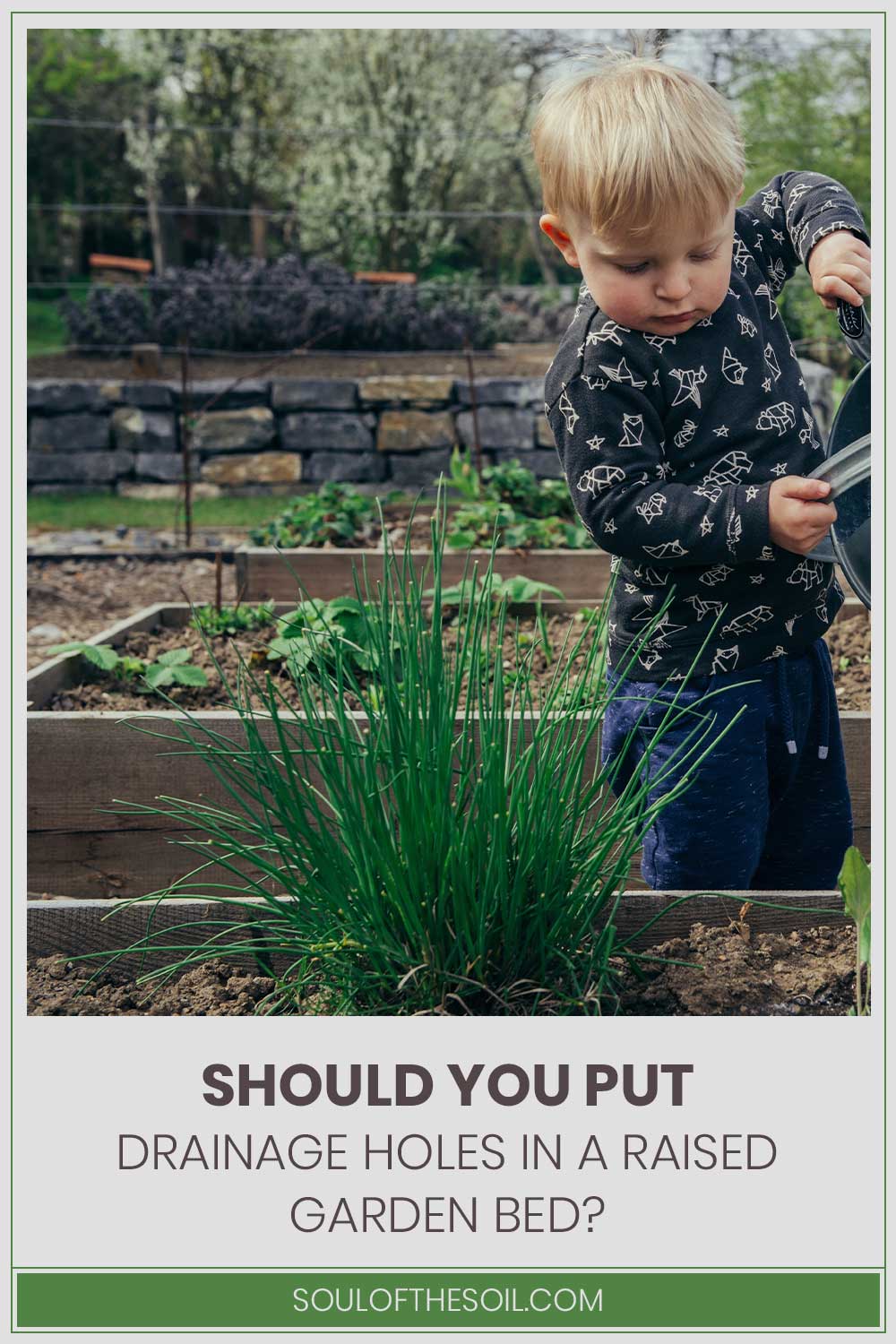Should You Put Drainage Holes In A Raised Garden Bed?
We may earn commissions for purchases made through links on our site. Learn more on our about us page.
Raised bed gardens benefit from having holes drilled into the base to assist with water drainage. If you water the soil more than it needs, the extra water will seep through the cracks in the soil.

How much Drainage Does a Raised Bed Need?
While raised beds built on naturally permeable soils drain naturally and allow for deep rooting.
Those built on poorly drained soils or on a solid base like concrete or paving will need to be filled with open textured soil, amended with sand if necessary, and equipped with sufficient holes in the sides to allow water to drain away.
About 25 centimeters of topsoil is ideal for most plants, and sharp sand can be used beneath it since it drains well, holds enough water to keep plants alive, and is stable enough for plants to root into.
What are the Advantages of it?
If you’re growing your plant indoors in a pot or other confined container, make sure it has adequate drainage. Because well-drained soil provides the right mix of water and air circulation to the roots, plants are better able to thrive in even the harshest of climates.
Soil erosion and nutrient loss due to runoff are two other problems that can be mitigated with good drainage. That’s why it’s important to ensure that the container your plant is in has proper drainage.
Damage to the roots, rotting, and the spread of fungal infections are all consequences of improper drainage.
Most of the time, the native soil in your yard isn’t great for growing plants because of its poor drainage or poor composition.
Heavy metals and herbicides may also be present. Because you have more control over the soil quality and drainage in raised garden beds, they are a great option for individuals with limited space or bad soil.
What if You Overwater it?
For the plant’s roots to extract nutrients from the soil, there must be a sufficient amount of oxygen present. If inadequate drainage is permitted to continue, excess water may pool in the soil, resulting in other issues, including the death of plant roots.
When Should You Put it?
It is worth mentioning that raised garden beds are particularly heavy, especially with all that soil in there. So, to make things easier for yourself, it is best to drill the drainage holes into them before you begin filling them with soil. The ideal hole size is 0.25 inches in diameter.
Things You Need to Know Before You Start
Raised garden beds, it’s important to remember, weigh quite a bit. Too much moisture in the soil will cause the garden to lean too heavily on its foundation.
Furthermore, the plant roots could be harmed by the stagnant water. This is why it’s smart to make some holes in your garden soil. In an ideal world, the diameter of the holes would be 0.25 inches.
Make sure there’s a hole in each corner, and then add 2 inches of gravel to the bottom of the garden to help it drain.
The holes on the base of your garden bed allow water to drain and air to circulate. Roots of plants benefit from increased oxygen and nutrient uptake when soil is aerated well.
Keeping the soil in your garden bed continuously working is another strategy to increase air circulation. This opens up spaces inside the soil and helps to break up the particles.
Final Thoughts on Should You Put Drainage Holes In A Raised Garden Bed
Putting holes in the bottom of a raised garden bed is a great idea as it has many benefits, such as making sure there isn’t too much build-up of water to drown the roots of the plants.
Raised garden beds are a great option for urban dwellers who want to cultivate their own food but lack the necessary square footage.
These setups have the added benefit of being less labor-intensive to oversee than traditional farms. What’s more, they have a high rate of productivity.
The bottom, however, requires drilling holes for drainage and ventilation. In addition, root rot and stunted plant growth, both of which can result from overwatering, can be avoided thanks to the holes.



Leave a Reply
You must be logged in to post a comment.